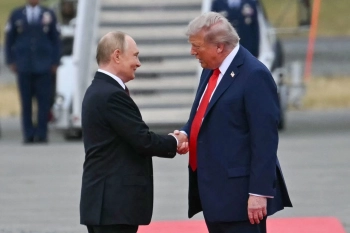Turkey's Monetary Pivot: The End of FX-Protected Deposits and Its Economic Implications
What happens when a nation abruptly terminates a flagship financial protection program that safeguarded citizens against currency volatility? Why would a central bank dismantle a mechanism designed to protect domestic savings? How will this decision ripple through Turkey's economy and affect ordinary citizens? These are the critical questions emerging after Turkey's recent landmark monetary policy shift.
The KKM Program: Understanding Turkey's Foreign Exchange Protected Deposit Scheme
Turkey's Foreign Exchange Protected Deposit scheme, known as KKM, was introduced in December 2021 as an innovative response to a deepening currency crisis. The program offered Turkish lira depositors protection against the sharp depreciation of the national currency by guaranteeing that if the lira's decline exceeded the interest rate earned on deposits, the government would cover the difference. This mechanism was specifically designed to discourage dollarization and encourage citizens to maintain their savings in lira despite soaring inflation and currency instability.
The practical application of KKM was straightforward: when a citizen deposited Turkish lira into a participating bank, they received a guarantee that their savings would be protected against exchange rate fluctuations. If the lira depreciated more than the interest earned on the deposit, the government would compensate the difference, effectively shielding savers from currency risk. At its peak, the program attracted massive participation, with balances exceeding $120 billion, representing nearly 30% of total deposits in the Turkish banking system.
The Rationale Behind the Termination: Why Turkey Ended Its Protection Scheme
The Central Bank of the Republic of Turkey (CBRT) terminated the KKM program as part of a broader shift toward conventional monetary policies under its new leadership. The program, while successful in preventing mass dollarization in the short term, had created significant contingent liabilities for the government and distorted market mechanisms. By guaranteeing against currency risk, the state had effectively taken on enormous financial exposure that became increasingly unsustainable as the program grew.
Economists had warned that the KKM scheme created moral hazard by insulating citizens from currency risk while doing little to address the root causes of inflation and lira weakness. The program's cost to the treasury had mounted into billions of dollars, creating fiscal pressure at a time when Turkey needed to demonstrate budgetary discipline. The practical reality was that the program could not continue indefinitely without creating potentially catastrophic fiscal consequences.
Real-world example: Similar to how Argentina's various currency protection schemes eventually became unsustainable, Turkey's KKM program reached a point where its financial burden outweighed its benefits, prompting policymakers to seek exit strategies.
Immediate Impact on Turkish Savers and Banking Sector
The termination of KKM deposits creates immediate implications for millions of Turkish savers who had entrusted their funds to the program. These depositors now face a critical decision: either convert their protected lira deposits to foreign currency accounts or accept unprotected lira deposits with potentially higher interest rates but greater exchange rate risk. This transition period creates uncertainty in the banking sector as institutions manage the migration of hundreds of billions of lira in deposits.
For the banking sector, the unwind presents both challenges and opportunities. Banks must now compete for deposits through traditional means like interest rates rather than relying on government guarantees. This could lead to more realistic pricing of risk and potentially higher returns for savers willing to accept lira exposure. However, the transition also creates liquidity management challenges as banks adjust to the new deposit landscape.
Practical application: A Turkish family with their savings in a KKM account must now reassess their financial strategy, weighing the potential returns of high-interest lira accounts against the stability of foreign currency deposits.

Broader Economic Implications and Market Reactions
The termination of Turkey's FX-protected deposit scheme signals a broader normalization of monetary policy under the country's new economic team. This move is expected to reduce the government's contingent liabilities and help restore confidence in orthodox economic policies. International investors have generally viewed the decision positively, as it demonstrates commitment to addressing underlying economic imbalances rather than masking them with temporary fixes.
However, the transition risks are substantial. If depositors respond by converting large volumes of lira to foreign currency, this could exacerbate pressure on the Turkish lira, potentially triggering the very currency crisis the KKM program was designed to prevent. The Central Bank's ability to manage this transition will be critical to maintaining stability. Market reactions have been cautiously optimistic, with the lira showing relative stability following the announcement, though long-term effects remain to be seen.
Real-world example: Similar to India's demonetization in 2016, Turkey's policy shift creates short-term disruption with the potential for long-term benefits if managed effectively.
International Perspective: How Turkey's Move Fits Global Trends
Turkey's termination of its FX-protected deposit scheme represents part of a broader global trend toward normalizing unconventional monetary policies implemented during periods of economic stress. Many countries introduced extraordinary measures during the COVID-19 pandemic and subsequent economic challenges, but as conditions stabilize, there is increasing movement toward policy normalization.
From an international perspective, Turkey's policy shift aligns with IMF recommendations and orthodox economic principles that emphasize market-determined exchange rates and interest rates. This move could improve Turkey's standing with international creditors and rating agencies, potentially lowering borrowing costs and attracting foreign investment. However, Turkey's situation remains unique due to the scale of its currency protection program and the specific challenges of high inflation and external debt.
Practical application: International investors watching Turkey's policy shift may view it as a positive signal for emerging market investments, potentially leading to increased capital flows to Turkey if the transition is successful.

Future Outlook: What Comes Next for Turkey's Monetary Policy
The termination of FX-protected deposits marks a significant milestone in Turkey's monetary policy journey, but it represents the beginning rather than the end of a transition period. The Central Bank will need to carefully manage the unwind of the program while maintaining financial stability. This likely involves continued tight monetary policy to control inflation and prevent excessive lira depreciation that could trigger a broader crisis.
Looking forward, Turkey's economic team faces the challenge of rebuilding confidence in the lira through conventional means rather than government guarantees. This will require sustained commitment to fiscal discipline, inflation control, and structural reforms. Success could position Turkey for more sustainable growth, while missteps could exacerbate existing economic challenges. The coming months will be critical in determining whether this policy shift represents a permanent turn toward orthodoxy or a temporary deviation before returning to unconventional approaches.
Real-world example: Similar to Brazil's successful inflation targeting regime established in the late 1990s, Turkey's move away from unconventional measures could pave the way for more stable economic foundations if implemented consistently.







